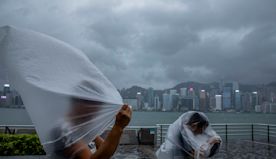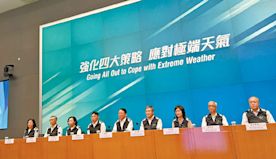搜尋結果
- 香港颱風 相關文章 - 雅虎香港
The Observatory was established on 2 March 1883 as the Hong Kong Observatory by Sir George Bowen, the 9th Governor of Hong Kong, with William Doberck [ sv ] (1852–1941) as its first director. Early operations included meteorological and magnetic observations, a time service based on astronomical observations and a tropical cyclone warning ...
- 315 (March 2018)
- Environment and Ecology Bureau
- 2 March 1883; 140 years ago
Astronomy is a natural science that studies celestial objects and the phenomena that occur in the cosmos. It uses mathematics, physics, and chemistry in order to explain their origin and their overall evolution. Objects of interest include planets, moons, stars, nebulae, galaxies, meteoroids, asteroids, and comets.
Part of Solar cycle 10. The Carrington Event was the most intense geomagnetic storm in recorded history, peaking on 1–2 September 1859 during solar cycle 10. It created strong auroral displays that were reported globally [1] and caused sparking and even fires [citation needed] in multiple telegraph stations.
The Hong Kong Space Museum is a public astronomy and space science museum located in Tsim Sha Tsui, Hong Kong. Opened on 8 October 1980, it is managed by the Leisure and Cultural Services Department of the Hong Kong Government. [1] The building is notable for its hemispherical shape, which contains a planetarium, the only one in Hong Kong.
The earliest datable record of an aurora was recorded in the Bamboo Annals, a historical chronicle of the history of ancient China, in 977 or 957 BC. An aurora was described by the Greek explorer Pytheas in the 4th century BC. Seneca wrote about auroras in the first book of his Naturales Quaestiones, classifying them, for instance, as pithaei ('barrel-like'); chasmata ('chasm'); pogoniae ...
A storm surge, storm flood, tidal surge, or storm tide is a coastal flood or tsunami-like phenomenon of rising water commonly associated with low-pressure weather systems, such as cyclones. It is measured as the rise in water level above the normal tidal level, and does not include waves.[1] The main meteorological factor contributing to a ...
New Zealand (Māori: Aotearoa [aɔˈtɛaɾɔa]) is an island country in the southwestern Pacific Ocean.It consists of two main landmasses—the North Island (Te Ika-a-Māui) and the South Island (Te Waipounamu)—and over 700 smaller islands.It is the sixth-largest island country by area and lies east of Australia across the Tasman Sea and south of the islands of New Caledonia, Fiji, and Tonga.





